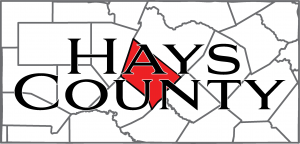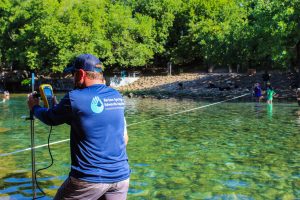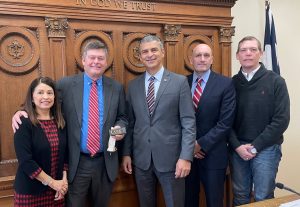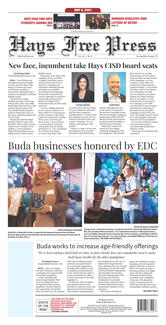by Sahar Chmais
Executive Director Vanessa Puig-Williams of the Trinity Edwards Springs Protection Alliance (TESPA) stood before the Barton Springs/Edwards Aquifer Conservation District (BSEACD) Dec. 12 in a final attempt to ask for a rehearing on the Needmore Water LLC case, but her request was shot down.
She presented no new data, only asking the five-member board to reconsider its decision in allowing Needmore Water LLC to pump up to 289 millions of groundwater each year.
“Needmore shou...
by Sahar Chmais
Executive Director Vanessa Puig-Williams of the Trinity Edwards Springs Protection Alliance (TESPA) stood before the Barton Springs/Edwards Aquifer Conservation District (BSEACD) Dec. 12 in a final attempt to ask for a rehearing on the Needmore Water LLC case, but her request was shot down.
She presented no new data, only asking the five-member board to reconsider its decision in allowing Needmore Water LLC to pump up to 289 millions of groundwater each year.
“Needmore should never have been allowed to apply for a House Bill 3405 permit in the first place,” Puig-Williams said. “I’m asking you to rethink your decision to grant this permit, to listen to the community that you represent – a community who is not afraid to say no to applicants who want to withdraw unreasonable and unsustainable volumes of groundwater. This may mean taking risks or veering from the charted course, but it is what is right.”
This board also heard testimony from a member of TESPA and from attorney Eddie McCarthy on behalf of Needmore. No community members came forward to speak, though they had in a lengthy meeting in July.
“There’s no change in law, no change in facts,” McCarthy said. “All I heard was an emotional plea and accusations that Needmore’s application is based on greed, which is both unfair and unfounded. District staff was readily involved with the HB 3405 process and are well aware of what’s required by an applicant and required by district. The district properly evaluated the permit via science and via law and made the right decision in July.”
After listening to both sides, the board members voted five to zero to grant the permit.
BSEACD Board President Blayne Stansberry said that she had hoped things would go a different way, but the members’ hands are tied by the Texas Legislature’s passage of HB 3405, which in 2015 had given Needmore Water LLC the permit to regulate certain wells in producing groundwater.
“I do not like the outcome,” Stansberry said, “and personally find it offensive that one landowner can pump so much groundwater in an area of Hays County when water is sparse.”
Similarly, Mary Stone, director of BSEACD, said that they didn’t write the law, but they have an oath to uphold it. Stone said the more popular decision would have been to deny the permit, but she had also considered the public money in her decision and didn’t want to waste it.
“A permit denial would clearly have been overturned by a court in light of the controlling law,” Stone added. “We just have to be financially responsible with public funds and not complying with the law is not responsible.”
The decision comes with some restrictions on Needmore to accommodate changing water conditions and protect the integrity of neighboring wells.
Brian Smith, aquifer science team leader senior hydrogeologist, broke down the regulations.
The water is drawn from 460 feet down the well. If the drawdown reaches 550 feet, then Needmore will need to cut back pumping by 20 percent. After another 25 feet, they must cut back 40 percent.
Although the BSEACD board denied a rehearing request from TESPA, it still has the chance to appeal its case to the district court.
“I do hope TESPA will not appeal this decision,” Stansberry said. “The district really needs to be spending its limited funds on monitoring aquifer levels in this area to protect Hays County landowners.”
According to the calculations done by the environmental team, the worst-case prediction is that Barton Springs will hit a drought by late January. Wells including the Lovelady monitor well and others are expected to reflect increasing drought by the month after that.
Still, Stansberry states that the Needmore Water LLC case is unique in that it’s been handled in a backward manner.
“There should not ever be another permit like this,” Stansberry said. “This is the price of having managed groundwater in Hays County, which is harm reduction considering how much could be pumped.”
Needmore Ranch, which encompasses that stretch of the Blanco River formerly known as “Little Arkansas,” is an auxiliary beneficiary of the fight between those in the area who rely on private water wells and Enviro Purification (EP), a Houston-based firm that planned to sell water pumped from the Trinity and Edwards aquifers. EP’s plans to draw hundreds of millions of gallons annually would threaten wells nearby, well owners maintained. HB 3405, which expanded BSEACD jurisdiction to include water well fields not previously covered, was passed by the Texas Legislature in the wake of that fight.
EP had already begun to drill test wells when the matter came to public scrutiny.













